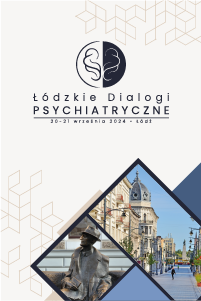The measurement of the symptoms of ADHD in the NICHQ Vanderbilt Assessment Scale for Parent (VADPRS) and for Teacher (VADTRS)
Halina Kądziela-Olech
 Affiliacja i adres do korespondencji
Affiliacja i adres do korespondencjiThe presence of several inattentive or hyperactive, impulsive symptoms in two or more situations (at home, school, in other activities) is required for the diagnosis of attention deficit hyperactivity disorder. There is clear evidence that the symptoms interfere with, or reduce the quality of, social, academic, or occupational functioning. The National Initiative for Children’s Healthcare Quality, American Academy of Pediatrics, recommended a toolkit with standardized assessment scales: NICHQ Vanderbilt Assessment Scale – Parent Informant (VADPRS) and NICHQ Vanderbilt Assessment Scale – Teacher Informant (VADTRS), each divided into two sections: symptoms and performance. The aim of the research was to determine whether there is a correlation between categorial symptoms of attention deficit hyperactivity disorder and results obtained in the assessment scales: VADPRS and VADTRS, and a comparative analysis of assessments made by parents and teachers regarding the symptoms and performance of children diagnosed with attention deficit hyperactivity disorder. The study group comprised 132 children (87.1% of boys, 12.9% of girls) with attention deficit hyperactivity disorder, aged between 6 and 12 years (mean age: 9.29 years; SD 1.96) who had been referred for specialized psychiatric diagnosis and therapy to the Day Care Psychiatric Unit. Diagnoses of attention deficit hyperactivity disorder were conducted pursuant to DSM-IV criteria. Each child with attention deficit hyperactivity disorder was assessed by its parent and teacher using the VADPRS and VADTRS. The statistical analysis (based on Statistica, StatSoft 10) revealed high correlations between categorial DSM-IV symptoms and VADPRS/VADTRS. These tools can be helpful in diagnosis, treatment and evaluation of the effects of therapy in children with attention deficit hyperactivity disorder.






















